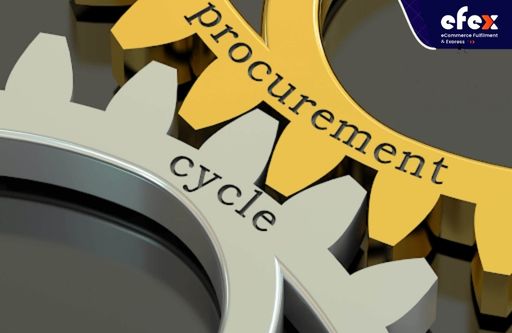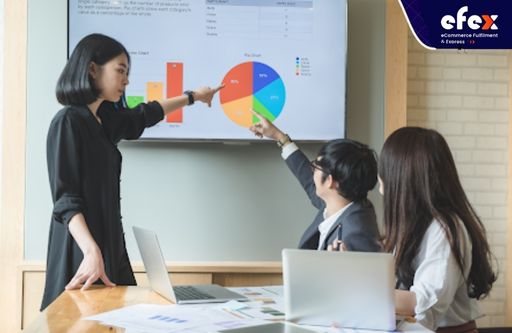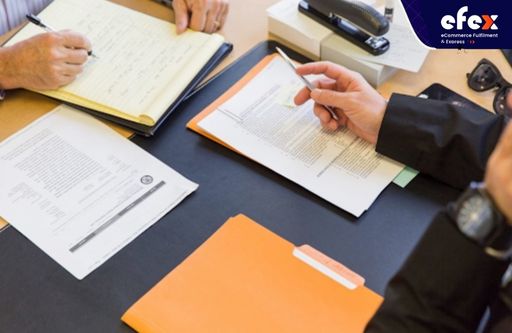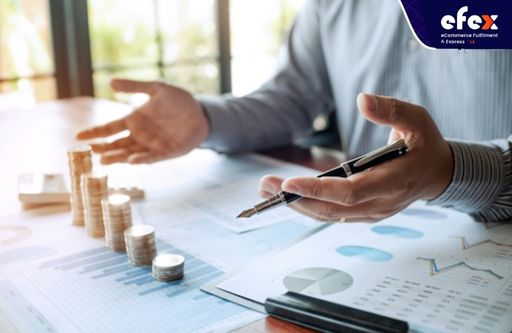
More Helpful Content
The procurement cycle is known as the sequence in which the different stages are accomplished from start to end. It encompasses all of the steps required to manage procurement, from your initial interaction with potential suppliers to the point at which the supplied goods are processed and put to use by the appropriate business department. Mastering the procurement cycle will bring to your business a simple guide for organizing and managing your procurement operations.
In this post, we'll look at the 13 stages of the procurement cycle with the detailed instructor. what duties and obligations they include, and how important they are to the procurement operations of your company.

The first stage of the procurement cycle is completely internal. Stakeholders in your company have now identified a need that has to be satisfied. This stage, whether it's a service or a product that must be purchased to support your core activities, is to define the need, frame it, and characterize it in terms of what it should do for you within your organization. In order to identify precisely what the supplies in issue should supply in terms of practical usage, identifying needs also entails creating specifications.
👉 Read More: 10 Steps Of The Procurement Cycle
The next step is to conduct essential market research when you have a clear vision of the products you want to purchase. In order to do this, one must weigh the options provided by different suppliers and calculate the cost of either creating the item in-house or getting it from a third party.
The planning phase of a strategy is when you decide on a supply method and determine your wants. The next step is to specify how you want to use the choice you selected during the market analysis phase.

You will have the chance to demand competitive rates or request suppliers to submit bids for your business, for instance, if you understand that your firm accounts for a sizeable amount of the revenue generated by your vendors.
In a nutshell, market testing entails evaluating customer responses to determine what changes should really be made to your purchasing strategy. You use a tiny portion of your procurement money to shop the market for the items you need. To gain a good view of your supply situation at this point, you take notice of determiners including pricing, regulations, and market dynamics.
For instance, your approach can alter to hoarding them in advance of the holiday price increases if your preferred supplier is rare around the holidays. You can adjust your buying strategy to accommodate prevailing market conditions by doing market research.
The relevant parties decide the requirements you demand for each supply item during the specification phase, including the standards for the product's quantity, quality, and functionality. Your goal is to establish specific preferences that will inform your purchasing decisions and ensure that the products you purchase will fulfill their intended function.
Depending on your industry, it might not be practical to get quotes from every prospective supplier. The most efficient strategy, in this case, is to establish a list of appropriate tactics and apply it to narrow down the providers who are qualified to participate during the course of the tendering process.
Documentation for the tender, including requests for quotations and questions about price, is given to the chosen suppliers along with a deadline for their response.

Following receipt of the bids as from short-listed vendors, the evaluation process comprises thoroughly and openly assessing each supplier's bid in order to determine which bid will be most favorable to your business. You perform thorough evaluations of every supplier's ability to deliver on their bids as the last step before purchasing contracts are granted, including examination of prior projects completed and sampling items and services, if accessible.
After you've chosen a vendor, a contract outlining the terms of the customer-supplier relationship is created; once both parties have reached an agreement on KPIs for contract performance, logistics, supply dynamics, invoicing, as well as contract management terms, the contract is created, and work on the products you've chosen can start.
👉 Read More: 10 Disadvantages And Advantages Of Activity-Based Costing
The supplier is responsible for supplying supplies that comply with the requirements determined upon at the contract award stage once the supply contract becomes legally enforceable.

To guarantee seamless, effective administration of the supply delivery, the logistics as well as warehousing arrangements negotiated before apply here. This comprises agreed-upon delivery frequency, spacing, layout, racking, and product labeling and categorization.
In accordance with the terms of the contract, you and the supplier, the supplier, are required to conduct regular reviews over time to evaluate how effectively the customer-supplier partnership has been operating, identify any relationship lapses, and determine a direction for the future to support excellent efficiency.
SRM (or supplier relationship management) is the ongoing process of managing your connections with your suppliers, including analyzing each supplier to ascertain the proper level of contribution needed to sustain your partnerships in order to meet your strategic objectives.
The needs of your business may change as time passes for a variety of reasons, such as expanding or altering your product line or focusing your attention on various market segments. Therefore, it's crucial to periodically assess your procurement requirements to see whether anything has changed and how you might modify your procurement in light of the new information.

Asset management is the act of keeping track of your procurement requirements to make sure that your company operations can still be supported by your procurement process.
By finding the appropriate vendors who adhere to your company's standards, delivery dates, and budget, the procurement process is essential to identifying and meeting the demands of the business. Companies cannot increase their profitability or get a competitive edge in their field without a successful procurement process.
An efficient supply chain helps businesses manage their expenditures, swap vendors and providers when necessary, and keep customers happy by providing their goods and services on time.
In some cases, especially if you are a visual learner, it might be helpful to visualize the procurement process as a flowchart. The productivity, production, and financial performance of your business may be dramatically impacted by streamlining your company's purchase procedure and using improved procurement procedures. Here are some suggestions for enhancing your company's procurement cycle.
Your purchase and procurement procedures must be automated if you want to make them more efficient. You can manage your expenditures, do away with paperwork, compile a list of chosen and qualified vendors, and document each stage of the procurement process for audit with the correct software.
Software for purchasing enables you to do everything remotely in emergency situations, like a pandemic.
CPOs are in charge of running the procurement department, and both their technical and interpersonal abilities are crucial. They establish enduring bonds with the appropriate vendors. This guarantees that products and services will be delivered on schedule. The appropriate CPO may help your company achieve its objectives and vision while reducing costs. Their job has evolved over the past few years to be more tactical than practical. They are familiar with the market, customer behavior, trends, and seasonality.
You can make sure your procurement cycle, as well as suppliers, are efficient by periodically reviewing them. You can see where there is an opportunity for improvement and can spot warning signs before they become serious issues by evaluating factors like supplier performance, quality, and purchasing criteria.
In order to improve your company's connections with its suppliers, you should also frequently check in along with vendors to learn about their suggestions for developing a win-win partnership and comprehend their demands.
👉 Read More: Difference Between Traditional Costing And Activity-Based Costing
👉 Read More: Activity-Based Costing Calculation With Example
Any business's ability to operate efficiently and financially depends on its procurement processes. It helps you find the best suppliers to collaborate with your business, lowers delivery times, and enables you to pay the proper amount for services and products.
Indeed, companies can prepare for the future by comprehending the next supply chain difficulties and the trends in the procurement sector. Future procurement trends include increased risk assessment, circular supply chains, and digital transformation, which are all at the forefront of the industry.
The latter increases the importance of transitioning to procurement and investing in software. Although making the switch to digital might first seem like a daunting job, the benefits to your business make it a complete no-brainer.
Hope you have a good time with Efex.


